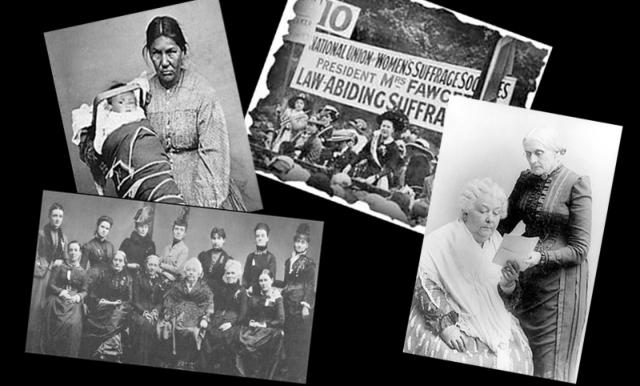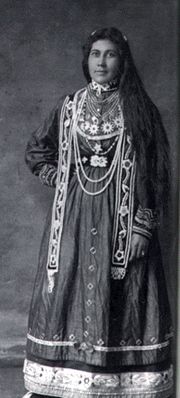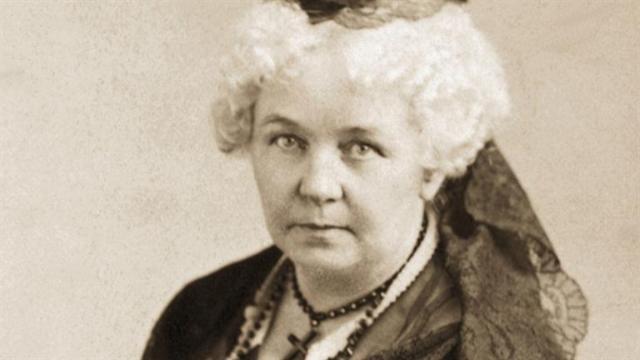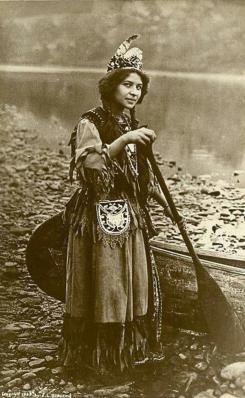 |
Canku Ota
|
 |
|
(Many Paths)
|
||
|
An Online Newsletter
Celebrating Native America
|
||
|
April 2017 - Volume
15 Number 4
|
||
|
|
||
|
Women's History:
Elizabeth Cady Stanton And The Seneca Women
|
||
|
by Dennis Jamison -
Communities Digital News, LLC
|
||
|
Most Americans may be surprised to learn that Elizabeth Cady Stanton had been influenced by American Indians in her strong convictions for equal rights for women and starting the women's movement in America
SAN JOSE — Women's history month would not be complete without an article about Elizabeth Cady Stanton. You might be surprised to learn that this most famous women's rights advocate was influenced by American Indians in her strong convictions for equal rights for women in the United States. Historians recognize Stanton and Lucretia Mott as the two women who organized the Seneca Falls Convention in 1848, which was the foundation for the women's rights movement in the U.S. Less is known about the influence Iroquois Indian women had upon Stanton, but it is enlightening.
Perceptions of the struggle for women's rights in America are
rarely shaded by an understanding of the influence of American Indians
upon American women with regard to gender equality, nor is that
commonly studied in American history classes. But long before Columbus
ventured across the Atlantic, women here enjoyed an equality only
dreamed of by European-American women. One reason for this was that some Native American tribes were matriarchal. American Indians held a genuine attitude of respect and trust toward women. This existed within the "Iroquois League," later known as the "Iroquois Confederation." The name "Iroquois" is believed to be a French derivative of a derogatory name attached to that nation by an enemy tribe. The Iroquois called themselves the "Haudensaunee," meaning the people of the longhouse. The concept of the longhouse, which was at the core of the people's identity and a tribal union of five original tribes, referred to the large and substantial elongated homes, literally long-houses. As many as 20 or more families could live together in these long houses. The Haudenosaunee based their concept of unity upon an understanding that their people were all from the same family or clan, and they should all live, or be welcomed under the same roof. In such an extended-family-oriented society, the women held many individual and community rights, and they often took leadership positions within the clan or tribal organization. The Iroquois women did not fit into the mold that European women were expected to accept in that day and age. They participated fully in helping to maintain the economic, political, social, and spiritual well-being of the community and the clans. The women served as the keepers of their people's culture and
served as clan leaders.
Elizabeth Cady Stanton discovered the Iroquois because her home in Seneca Falls, New York, was very near the Seneca tribal homelands, and the Seneca were one of the initial five tribes of the Iroquois Confederation. The Seneca land was on the western end of the Iroquois Confederation territory, in upstate New York. The people of the Iroquois Confederation understood their collective tribal lands as one large longhouse along the southern shores of Lake Ontario, with the Seneca land considered the western "gate" to the extended Iroquois Confederation territory. The Stanton family interacted with the Seneca people; they visited with each other and learned much from the acquaintances.
Through the Seneca women, Stanton would have been shocked to realize that Iroquois women enjoyed many rights not normally permitted to women in European-American society. The fact that Iroquois women served as clan leaders would have been amazing to her since women did not even have the right to vote in the U.S. Even more shocking to Stanton would have been the custom of Iroquois women not only nominating men for positions of leadership, but also insisting that specific leaders be removed from power if they did not fulfill their responsibilities to the clan or tribe. In a similar manner, but on a more personal level, if a woman felt that her husband was not a good husband to her or a good father for her children, she could ask him to leave their dwelling, essentially divorcing the man. In Stanton's world, American women had no right to divorce their husbands, and parental rights were retained by the father. With the Iroquois people, the woman's husband would normally live in the home of the wife's clan, and if the husband was asked to leave the family, the children remained with their mother. Iroquois women held the primary responsibility for raising the children. Because the children were considered members of the mother's clan, the mother's family also took responsibility, especially with regard to education. By training the future generations, the Iroquois women assured the survival of their people and their culture. Even though women held much authority within their society, it was not a female-dominated matriarchy; yet, tribal leadership was matrilineal, as the sister of the sachems (chiefs or leaders) chose the male successor once her brother no longer held a leadership position. In the Iroquois society, women participated in many activities and held responsibilities that were primarily reserved only for men in the European-based culture, regardless of the nation. Stanton was exposed to this alternate reality in her backyard. In 1848, when Lucretia Mott finally came to fulfill the two women's dream of organizing the women's convention, Stanton requested that Mott visit the Seneca Indian community first. Stanton may have hoped the experience would speak more to Mott than mere conjecture. It was not by accident that this seminal women's convention was held in Seneca Falls. It is not known, but it is conceivable, that Stanton could have had all of the attendees go on a field trip to the Seneca nation, or could have had native women come and speak as part of the scheduled events. But this would not have been a major plus in the public relations effort to attract potential supporters to the women's cause. Stanton was practical as well as idealistic. In the mid-1840s, Stanton endorsed a campaign for women's rights that included calls for women's suffrage, and like the Iroquois women, the right to own property and inherit property, as well as the right to divorce one's husband for just cause, and to maintain parental rights when there were children. Stanton would be considered far ahead of her time in the 1840s, but another perspective is that western culture was behind the Indian culture by several centuries. But, who is keeping score? |
||||||||
|
|
|
||
|
|
||
| Canku Ota is a free Newsletter celebrating Native America, its traditions and accomplishments . We do not provide subscriber or visitor names to anyone. Some articles presented in Canku Ota may contain copyright material. We have received appropriate permissions for republishing any articles. Material appearing here is distributed without profit or monetary gain to those who have expressed an interest. This is in accordance with Title 17 U.S.C. Section 107. | ||
|
Canku Ota is a copyright ©
2000 - 2017 of Vicki Williams Barry and Paul Barry.
|
||
 |
 |
|
|
The "Canku
Ota - A Newsletter Celebrating Native America" web site and
its design is the
|
||
|
Copyright ©
1999 - 2017 of Paul C. Barry.
|
||
|
All Rights Reserved.
|
||




